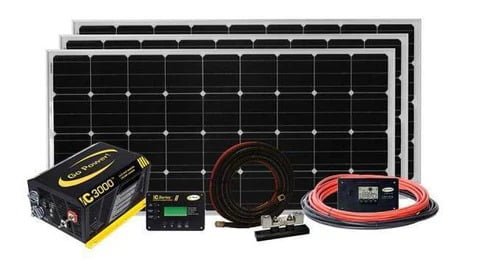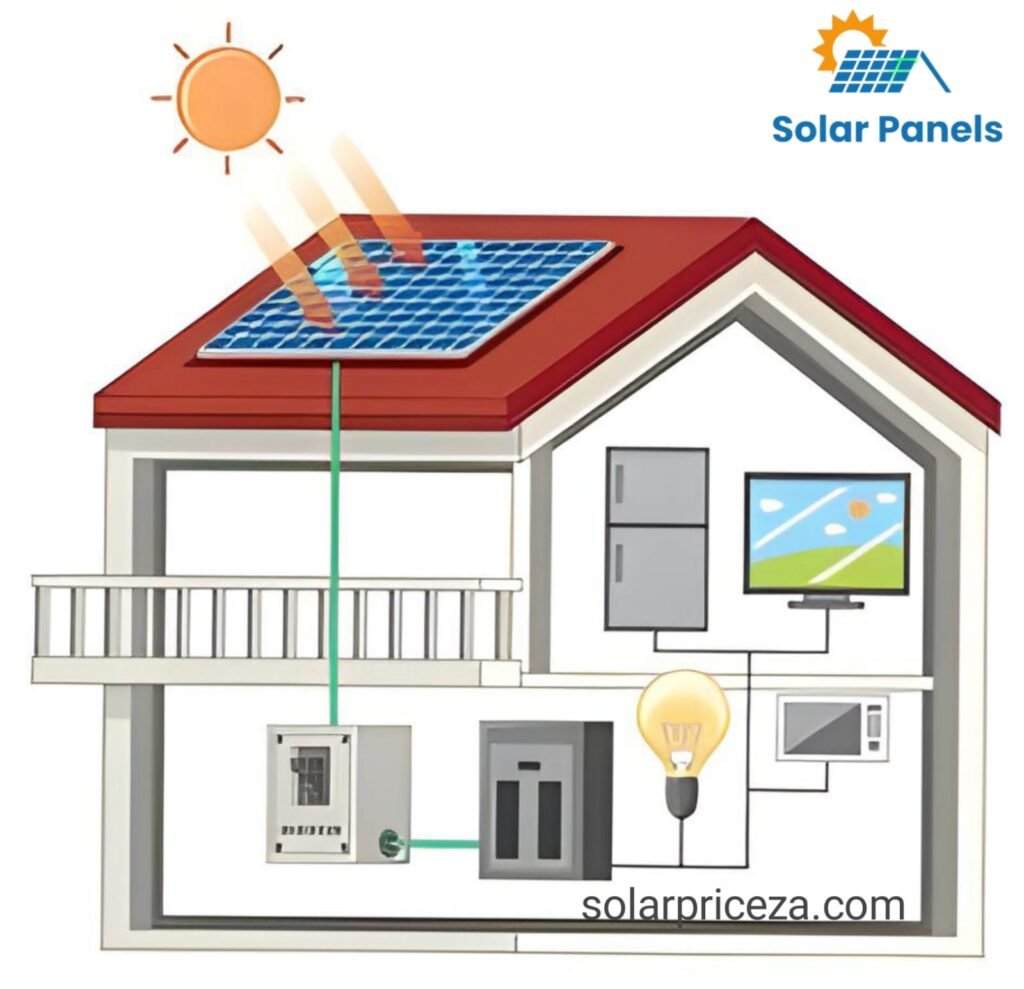The Importance of Cable Sizing in Solar Power Systems
The Cable Sizing in Solar Power Systems is a crucial consideration because it can impact how well it works. This blog post explains the significance of wire sizing for solar power installations.

Understanding cable size
Cable sizing is a crucial choice in solar power systems, not only for technical reasons but also for operational safety and system efficacy. The main goal of cable sizing is to prevent insulation damage, fire dangers, or energy losses by ensuring that the electrical wiring can withstand the current (amps) produced by the solar panels without overheating. To conduct current safely and effectively, this method entails first determining the maximum current flow in the system and then choosing a cable with a suitable cross-sectional area (CSA).
Types of cables used in a solar panel system
Within the installation, solar power systems make use of a variety of cables designed for specific purposes.
1: PV Cables: PV cables are designed to connect solar panels. The materials used to construct them make them durable, resistant to UV rays and temperature changes, and insulated with materials like cross-linked polyethylene to withstand harsh outdoor conditions.

2: DC (Direct Current) and AC (Alternating Current) Cables: Solar installations use DC and AC cables, connected by inverters, to convert DC electricity into AC power, distributed via AC lines, ensuring energy loss and safety.
- AC Cable: 1.5 to 2 km
- DC Cable: 15 to 20 km

3: Battery cables: Battery cables are crucial for linking solar batteries to energy storage systems, ensuring they can withstand high currents during charging and discharging cycles for effective storage and retrieval.

How should solar panel system cables be sized?
Calculate the load: Decide the combined wattage of every device connected to the sunlight-based power arrangement.
Determine the length of the cable: Checking the distance between the batteries, inverters, and solar panels will provide the length of the cable.
Choose the sizes of the cables: To get the right cable size depending on load and cable length, use a cable sizing calculator or expert advice.
Take voltage drop into account. Ensure that the chosen cable size can withstand the voltage drop during the cable run.
Select the correct power cable. Ensure that the cables you select are suitable for the voltage and current of your solar power system and suitable for outdoor use.
Why is cable sizing important in a solar panel system?
Efficiency: Correctly designed wires minimize resistance-related energy loss. Too-small wires risk overheating, wasting energy, and perhaps damaging the equipment.
Safety: A fire hazard may arise from overloaded cables. You can make sure the cables can safely support the load without overheating by using the appropriate cable size.
System Performance: The efficiency and energy production of a solar power system might be negatively impacted by undersized wires.
Cost Effectiveness: By lowering energy loss and the need for maintenance and repairs, using the proper size of cables can save you money over time.
Voltage Drop Requirements for Calculating Cable Size
The passage of electrical energy causes a voltage drop, which results in a reduction in voltage impacted by factors such as cable length, current, and resistance. Maximum percentages for different applications are specified by industry standards. For example, the maximum voltage loss for solar installations is usually about 1% for DC lines and 2% for AC cables.
Step-by-Step Cable Sizing Calculation Example:
For a 500 kW solar power plant, we will use the following data to show cable sizing calculations:
- Selected Cable Specification: 3.5C X 50 Sq. mm Armoured Aluminum
- Cable Resistance: 0.82 Ohm/km
- Cable Reactance: 0.078 Ohm/km
- Current Carrying Capacity: 140 A
- Ambient Temperature: 35 °C
- Inverter Voltage: 415 V
- Max AC Output Current: 96 A
- Approximate Cable Length: 75 m
Step 1: Calculate the full load current.
- The full load current is calculated as follows:
- Full Load Current = Inverter Max AC Output Current / Power Factor
- In this case, the power factor (cos ϕ) is assumed to be 1.
- Full Load Current = 96 A / 1 = 96 A
Step 2: Calculate the voltage drop.
- The voltage drop is calculated as follows:
- Voltage Drop = Full Load Current x Cable Resistance x Cable Length / 1000
- In this case, the cable length is 75 m.
- Voltage Drop = 96 A x 0.82 Ohm/km x 75 m / 1000 = 5.9024 V
Step 3: Calculate the Voltage Drop
- The calculation for the percentage voltage drop is as follows:
- % Voltage Drop = Voltage Drop / Inverter Voltage x 100
- % Voltage Drop = 5.9024 V / 415 V x 100 = 1.42%
- The voltage drop for this installation is within
Conclusion:
The importance of cable size in the context of solar power systems cannot be overemphasized. It is an essential part that makes sure solar arrays run safely, effectively, and economically. It is critical to comprehend and put the principles of appropriate cable sizing into practice as the world grows more reliant on renewable energy sources. Let’s not lose sight of the fundamentals, including cable sizing, which is crucial to the dependability and success of solar power systems, while we push for and execute these solutions. Making well-informed decisions, carefully preparing ahead, and possessing a thorough understanding of.
FAQ's
To choose the proper size and kind of cable for effective energy transmission in a solar power system, cable sizing is important.
Specific wires made to withstand UV light and used outdoors are necessary for solar power systems.
An undersized cable can cause overheating, fires, and energy losses.
Refer to the manufacturer’s instructions, take into account the voltage and current ratings of the system, utilize cable sizing calculators, or contact professional advice.


